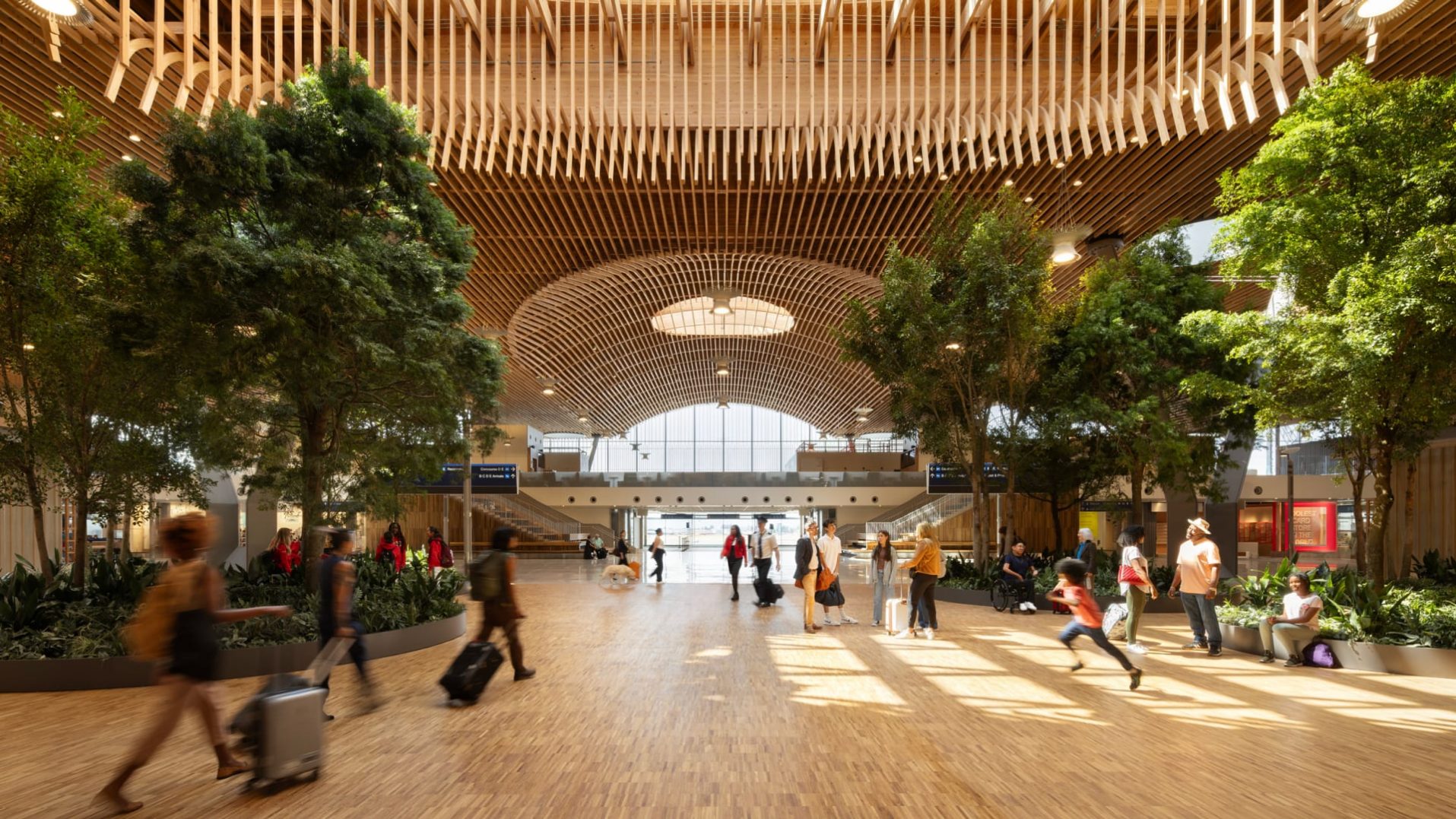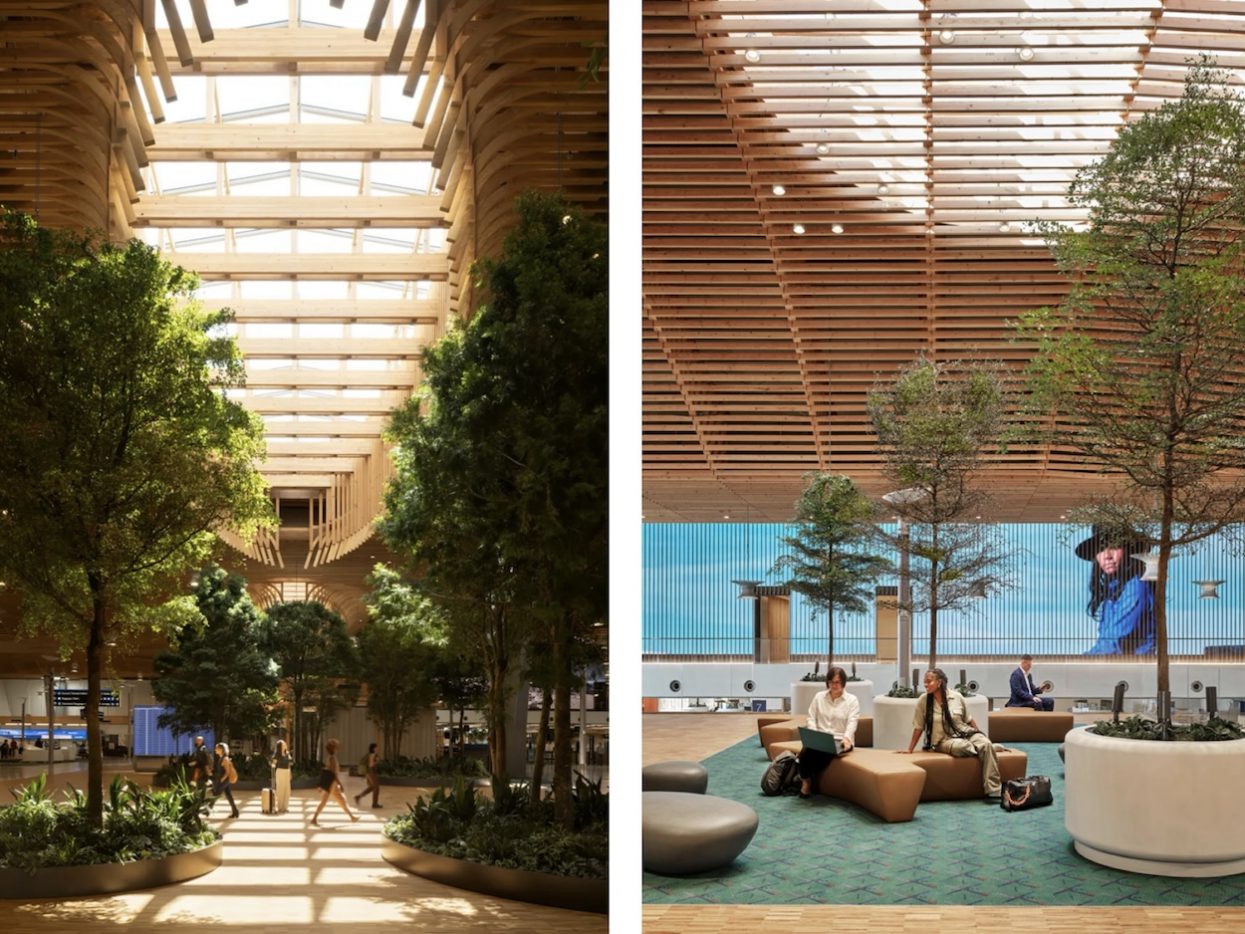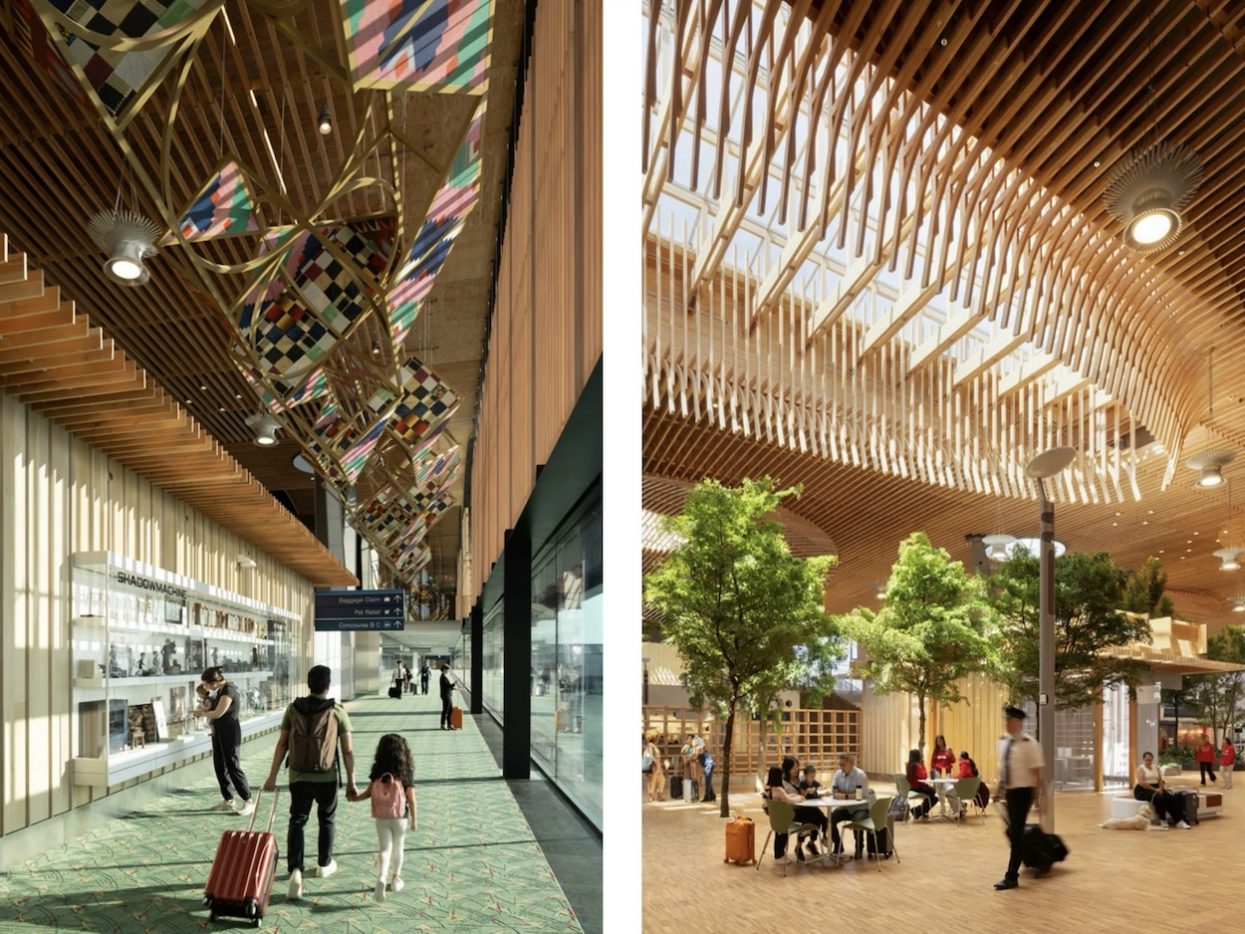If you forgot that the Pacific Northwest is one of the world’s crucial suppliers of mass timber, traveling through the newly renovated Portland International Airport (PDX) will certainly jog your memory. Often ranked one of North America’s best airports for customer satisfaction, PDX has pulled back the curtain on a decade-long $2 billion transformation by ZGF Architects that unites a half-dozen haphazard existing buildings under an undulating 54-foot-tall roof made from ultra-durable glulam planks.
The canopy both celebrates the region’s robust timber industry and allows the airport to reach rigorous sustainability goals. Its success is made all the more satisfying thanks to a process ZGF developed that works directly with regional foresters to source timber from within 300 miles of the city. Soon, a series of forest markers will indicate which specific types of wood are used and where they originated.
ZGF leaned on biophilic principles to ease flight-related anxieties and present an alternative to antiseptic airports that make travelers feel compressed. Nearly 50 skylights are spread across the terminal’s one million square feet, providing more than half of the building’s light needs and nourishing 72 ficus and olive trees perched underneath curved timber beams.
“Just the exposure to natural wood material in a non-uniform pattern has a psychological effect on us,” Jacob Dunn, principal at ZGF, told Forbes. Two giant ad-free video walls, meanwhile, stream scenes of crashing waves on the Oregon coast. There’s also blue-chip art—Yoonhee Choi offered two 56-foot-long glass wall collages while quilt-based works by Sanford Biggers hang from the ceiling. Most importantly, the airport will retain its local flavor by eschewing commercial chains in favor of beloved haunts like Powell’s Books and Missionary Chocolates.
“Regardless of where anyone’s airport is located, wood is a possibility to use,” Dunn told Fast Company. “This isn’t just a story about regional wood, but it’s a story about how to use wood in the right way, how to tap into the talent and really identify those forests that are managing their forest in a really sustainable, appropriate, and ecological way.”



